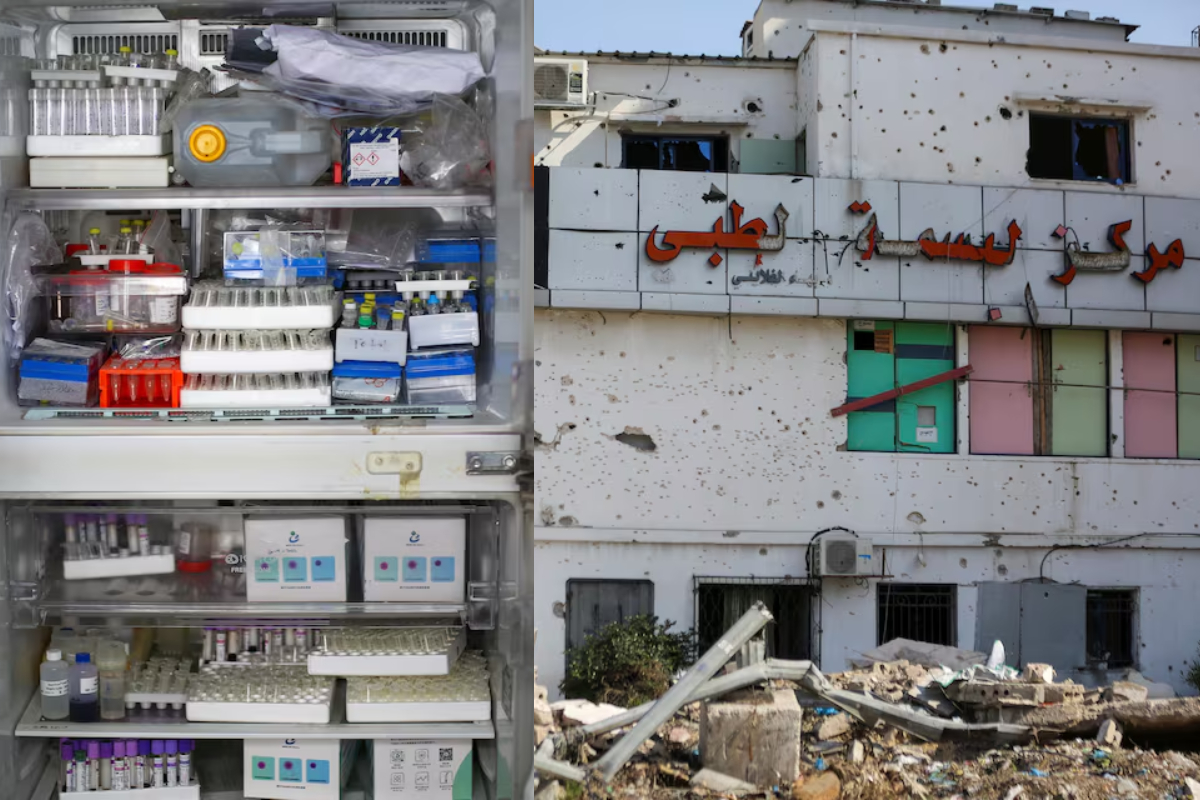‘5,000 lives in one shell’: Gaza’s IVF embryos destroyed by Israeli strike
When an Israeli shell struck Gaza’s largest fertility clinic in December, the explosion blasted the lids off five liquid nitrogen tanks stored in a corner of the embryology unit.
As the ultra-cold liquid evaporated, the temperature inside the tanks rose, destroying more than 4,000 embryos plus 1,000 more specimens of sperm and unfertilized eggs stored at Gaza City’s Al Basma IVF centre.
The impact of that single explosion was far-reaching — an example of the unseen toll Israel’s six-and-a-half-month-old assault has had on the 2.3 million people of Gaza.
The embryos in those tanks were the last hope for hundreds of Palestinian couples facing infertility.
“We know deeply what these 5,000 lives, or potential lives, meant for the parents, either for the future or for the past,” said Bahaeldeen Ghalayini, 73, the Cambridge-trained obstetrician and gynaecologist who established the clinic in 1997.
At least half of the couples — those who can no longer produce sperm or eggs to make viable embryos — will not have another chance to get pregnant, he said. “My heart is divided into a million pieces,” he said.
Asked about the incident, the Israeli military’s press desk said it was looking into the reports. Israel denies intentionally targeting civilian infrastructure and has accused Hamas fighters of operating from medical facilities, which Hamas denies.
Large families are common in the enclave, where nearly half the population is under 18 and the fertility rate is high at 3.38 births per woman, according to the Palestinian Bureau of Statistics. Despite Gaza’s poverty, couples facing infertility pursue IVF, some selling TVs and jewellery to pay the fees, Al Ghalayini said.
At least nine clinics in Gaza performed IVF, where eggs are collected from a woman’s ovaries and fertilized by sperm in a lab. The fertilized eggs, called embryos, are often frozen until the optimal time for transfer to a woman’s uterus. Most frozen embryos in Gaza were stored at the Al Basma centre.
As the Israeli attacks intensified, Mohammed Ajjour, Al Basma’s chief embryologist, started to worry about liquid nitrogen levels in the five specimen tanks. Top ups were needed every month or so to keep the temperature below -180C in each tank, which operate independent of electricity.
After the war began, Ajjour managed to procure one delivery of liquid nitrogen, but Israel cut electricity and fuel to Gaza, and most suppliers closed.
At the end of October, Israeli tanks rolled into Gaza and soldiers closed in on the streets around the IVF centre. It became too dangerous for Ajjour to check the tanks.
Ghalayini said a single Israeli shell struck the corner of the centre, blowing up the ground floor embryology lab. He does not know if the attack specifically targeted the lab or not.
“All these lives were killed or taken away: 5,000 lives in one shell,” he said.
In April, the embryology lab was still strewn with broken masonry, blown-up lab supplies and, amid the rubble, the liquid nitrogen tanks, according to a Reuters-commissioned journalist who visited the site.
The lids were open and, still visible at the bottom of one of the tanks, a basket was filled with tiny colour-coded straws containing the ruined microscopic embryos.


